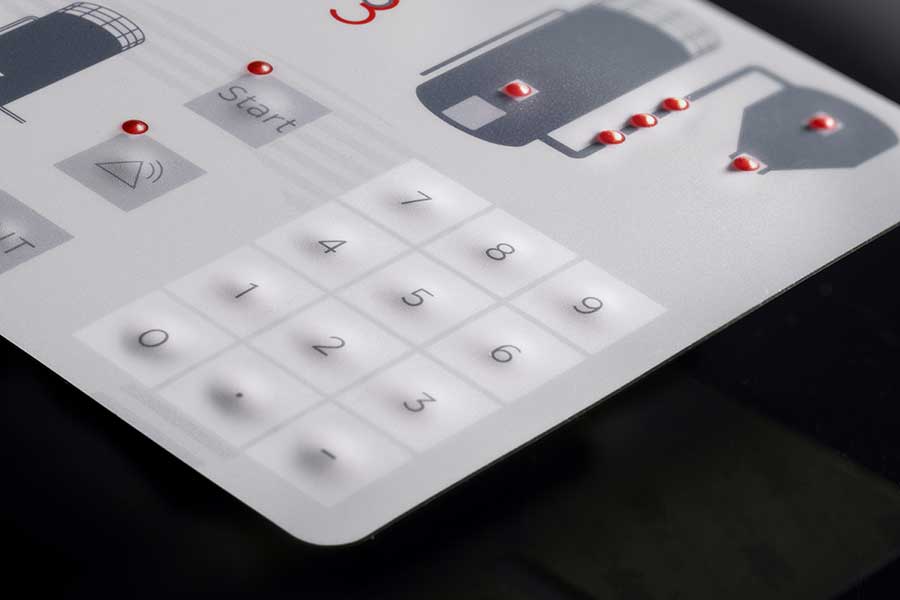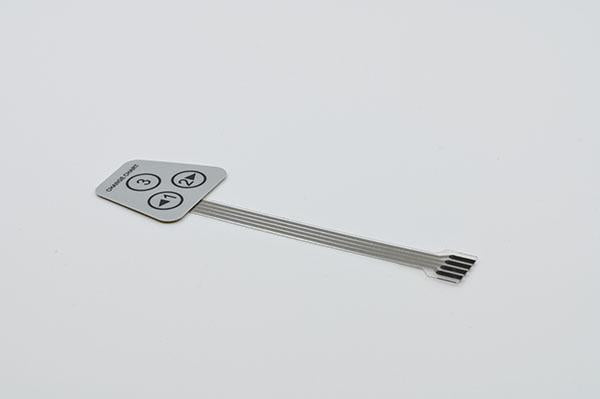Understanding the Technology Behind Membrane Switches
Understanding the Technology Behind Membrane Switches
Blog Article
Discover How Membrane Switches Function and Their Duty in Modern Electronic Devices
Membrane Switches represent an innovative combination of modern technology and design within the realm of modern-day electronic devices, serving as essential interfaces in countless gadgets. Recognizing the intricacies of Membrane button performance and their wider ramifications in improving individual experience welcomes additional exploration into their layout, benefits, and the cutting-edge advancements shaping their future in innovation.
What Are Membrane Switches?

Membrane switches are identified by their sturdiness and resistance to environmental aspects, such as dust, moisture, and extreme temperatures. They can be customized with various graphics, shades, and responsive responses options, enhancing user experience while keeping visual charm - membrane switches. The consolidation of published circuits permits for seamless integration into tools, boosting total performance.
The adaptability of Membrane switches is evident in their capacity to sustain both complex and simple control features. They can integrate functions such as LED indicators and touch-sensitive modern technology, providing to particular user needs. As modern technology continues to evolve, Membrane Switches continue to be crucial for making it possible for user-friendly and efficient user interfaces, therefore playing an essential role in the innovation of modern-day electronic tools.
Components of Membrane Switches
Membrane switches are made up of a number of vital components that interact to develop a reliable and useful interface. The main elements consist of the visuals overlay, sticky layer, spacer layer, and conductive traces.
The visuals overlay functions as the interface, usually published on a versatile substratum such as polyester or polycarbonate. This layer not only supplies visual charm yet also includes responsive feedback, visual signs, and protective functions. Under the visuals overlay exists the adhesive layer, which protects the button to the device and guarantees durability against ecological stresses.
The spacer layer is important for keeping the necessary space in between the visuals overlay and the circuit layer. This gap permits the activation of the switch when stress is used. The conductive traces, generally made from silver or carbon, form the electrical pathways that complete the circuit when the button is involved.
In addition, a support layer might be included for structural support and insulation. These components work together effortlessly, ensuring that Membrane switches are both straightforward and resistant, making them essential in different modern-day digital applications.
How Membrane Switches Job
Exactly how do Membrane Switches function effectively within digital gadgets? Membrane Switches operate on the concepts of pressure-sensitive innovation, utilizing a split building that includes visuals overlays, adhesive layers, and conductive components.
The style of Membrane buttons is essential for their effective procedure (membrane switches). The layers are meticulously crafted to offer responsive comments, resilience, and resistance to ecological elements such as dampness and dust. The incorporation of domes-- little, raised areas within the button-- boosts tactile feedback, supplying individuals with a visible click sensation upon activation
Additionally, Membrane switches can be tailored in terms of dimension, form, and graphics, making them appropriate for numerous applications. They are typically made use of in control panels, medical gadgets, and customer electronics because of their streamlined design and integrity. Overall, the effective performance of Membrane switches is essential in boosting user interaction and making certain seamless operation in contemporary digital tools.

Applications in Modern Devices
Utilizing their distinct style and capability, Membrane switches have become essential elements in a variety of modern electronic devices. These versatile interfaces are employed in consumer electronics, industrial equipment, medical devices, and automotive controls, offering seamless user interaction.
In consumer electronic devices, Membrane buttons are generally located in devices like microwaves, cleaning makers, and various other family gadgets, where they allow intuitive control with a sleek profile. Their inconspicuous layout assists in combination into portable gadgets, improving aesthetic charm without endangering capability.
In commercial applications, Membrane Switches function as control panels for machinery, offering durability and resistance to harsh settings. Their capacity to stand up to wetness and contaminants makes them ideal for usage in production and processing sectors.
Clinical More Info devices likewise benefit from Membrane switches, which are designed to be very easy to clean and maintain, making certain health in clinical setups. They are commonly used in analysis devices, patient surveillance systems, and portable medical gadgets, where reliability is extremely important.
Advantages of Membrane Switches
Among the crucial advantages of Membrane buttons is their adaptability, which allows them to be customized for a variety of applications throughout multiple markets. These buttons can be created in various forms and dimensions, fitting one-of-a-kind product needs while offering smooth integration into tools. Their thin account enables a smooth and portable layout, typically boosting the aesthetic allure of electronic items.
An additional substantial advantage is their resilience - membrane switches. Membrane switches are usually resistant to dirt, moisture, and chemicals, making them suitable for extreme atmospheres. This strength extends their life-span compared to typical mechanical buttons, minimizing the demand click to investigate for frequent substitutes
Furthermore, Membrane Switches deal cost-effectiveness. The production process includes printing modern technologies that reduce production expenses, particularly for huge runs. This cost, incorporated with low maintenance demands, makes them an attractive option for makers.

Verdict
In verdict, Membrane Switches stand for a considerable improvement in interface innovation within modern-day electronics. Their split construction, pressure-sensitive operation, and flexibility to various applications emphasize their significance across numerous industries. The sturdiness and environmental resistance of Membrane Switches better improve their appeal, making them a favored choice for producers seeking dependable and customizable services. As the demand for intuitive and durable interfaces continues to grow, the duty of Membrane switches fit user experience will most certainly expand.
Membrane Switches stand for an innovative combination of modern technology and layout within the world of modern-day electronics, serving as crucial interfaces in numerous tools.In the world of modern-day electronics, Membrane Switches serve as important parts that assist in customer communication with devices. As technology continues to develop, Membrane Switches remain vital for allowing intuitive and effective individual interfaces, thus playing a pivotal role in the innovation of contemporary electronic gadgets.
Just how do Membrane Switches function properly within electronic tools? On the whole, the reliable performance of Membrane switches is critical in boosting user interaction and making sure smooth procedure in contemporary electronic tools.
Report this page